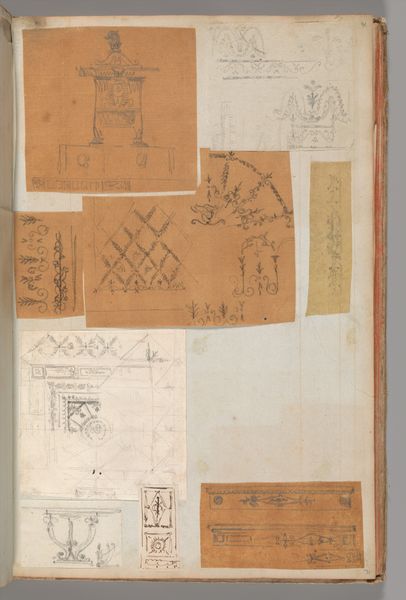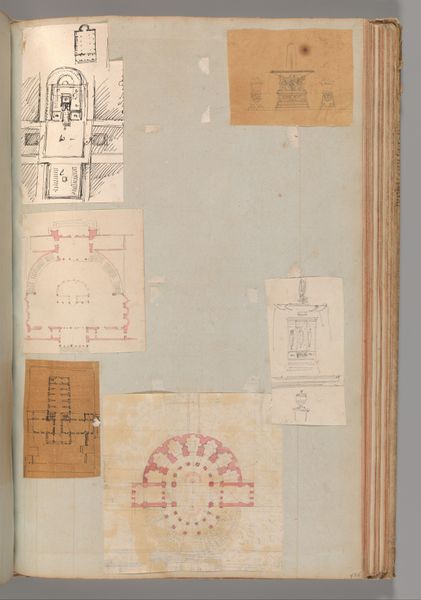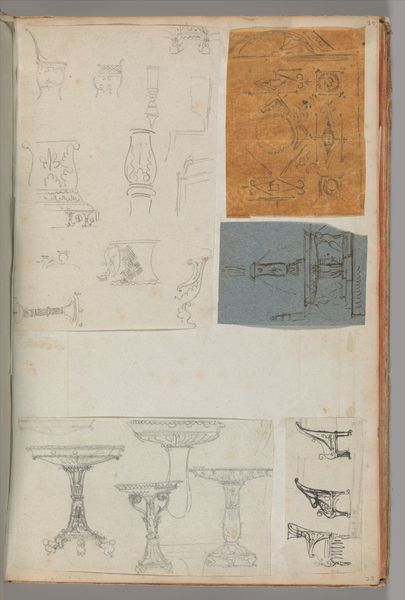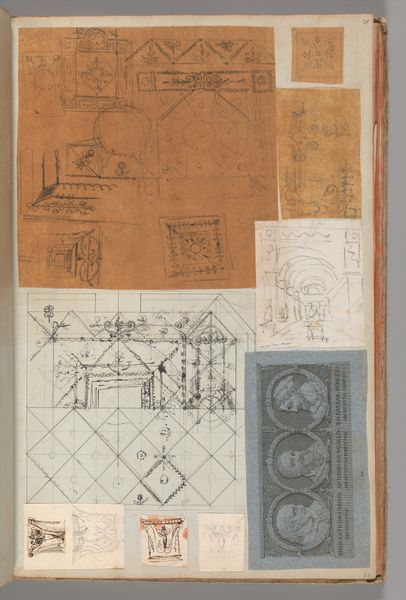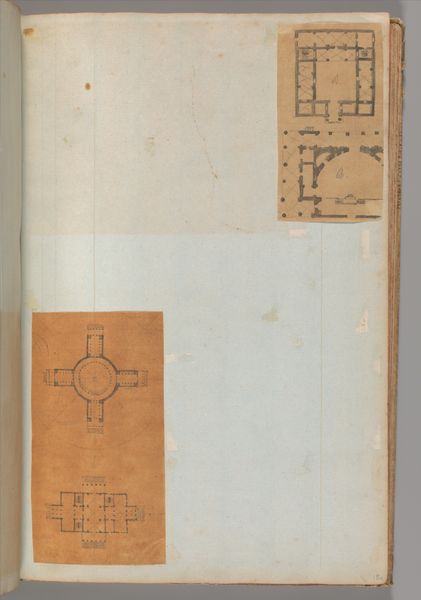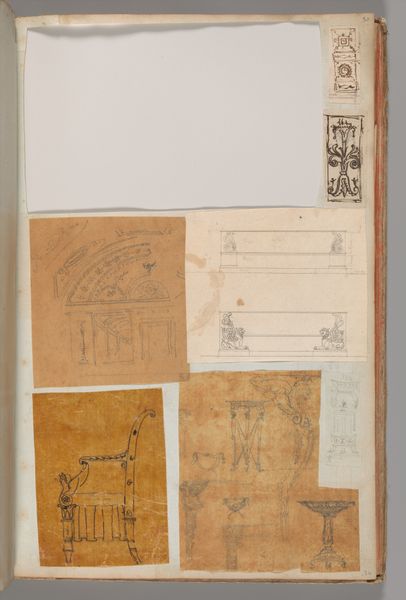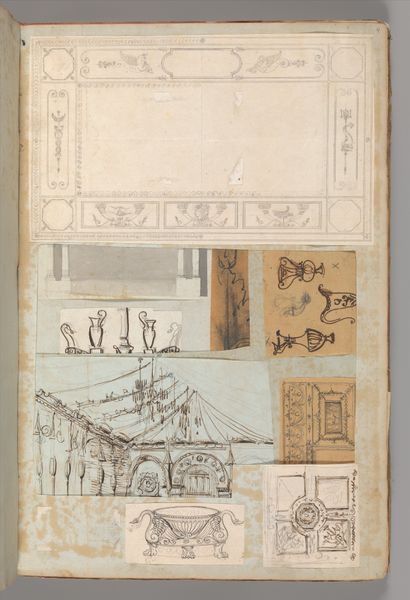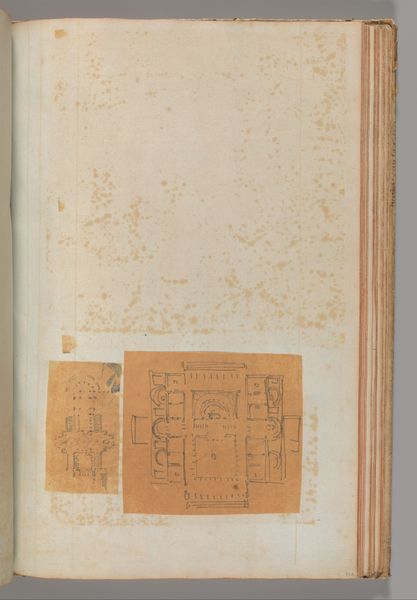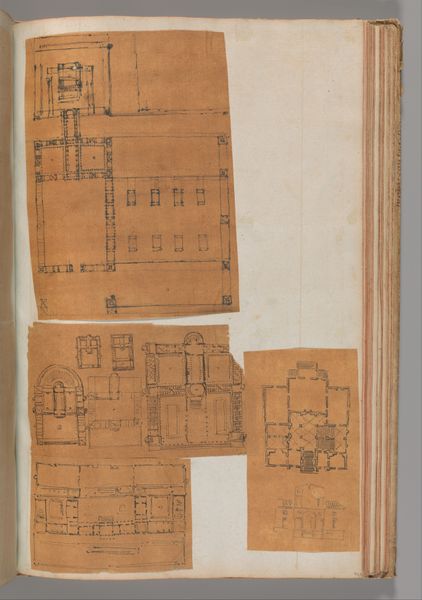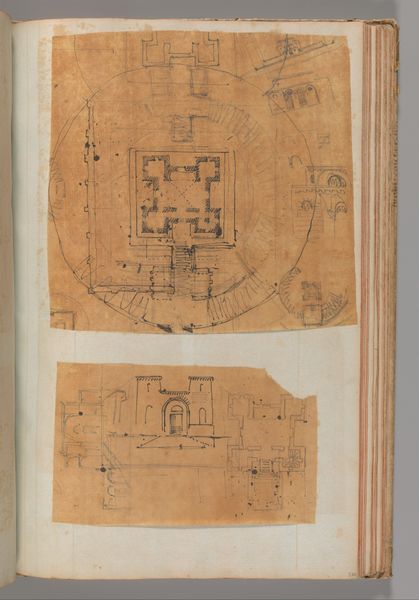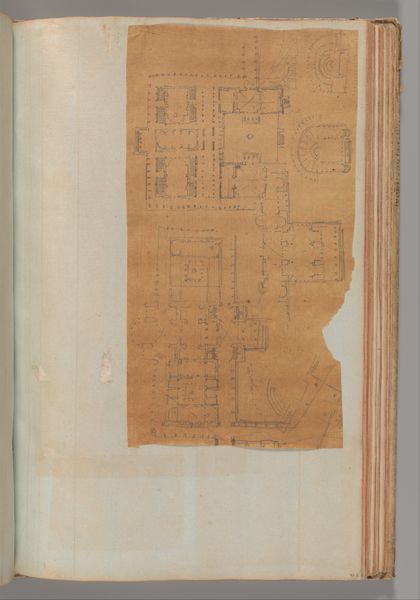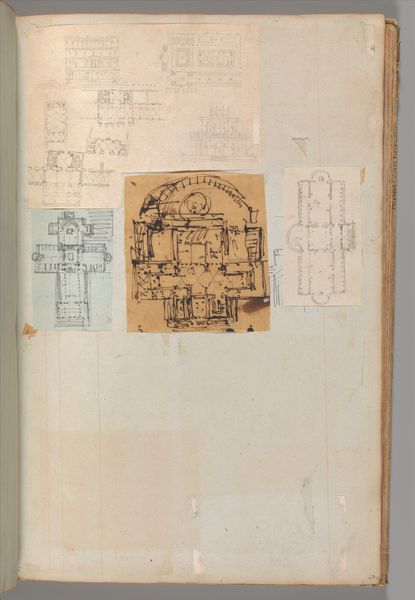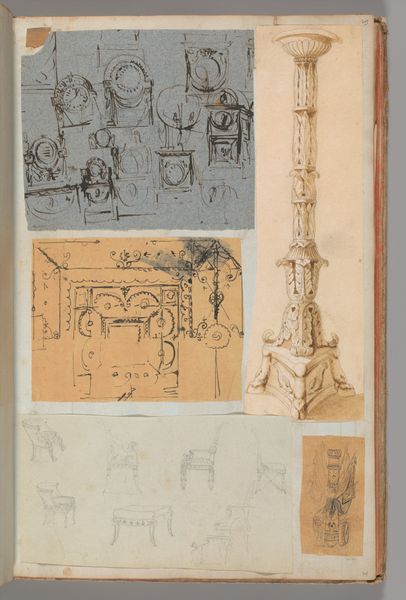
Page from a Scrapbook containing Drawings and Several Prints of Architecture, Interiors, Furniture and Other Objects 1795 - 1805
0:00
0:00
drawing, print, paper, ink, pen, architecture
#
drawing
#
neoclacissism
# print
#
paper
#
ink
#
pen
#
architecture
Dimensions: 15 11/16 x 10 in. (39.8 x 25.4 cm)
Copyright: Public Domain
Curator: Oh, look at this fascinating page from a scrapbook! It contains drawings and prints—several prints, actually—of architecture, interiors, furniture, and various other objects, all from between 1795 and 1805, by Charles Percier. It's a whole world in a page. Editor: My first thought? Intimacy. I mean, look at the careful collage, the textures. It's like peeking into someone's mind, seeing the beautiful mess of ideas as they blossom, as they become something…real. It feels intensely personal. Curator: It truly does. Percier was, of course, a leading figure in the Neoclassical movement, and we can see how that translates to his meticulous documentation and study of classical forms. The way he presents the built world—a collection of memories, sketches and influences—reveals a man deeply invested in both the beauty of the antique and the shaping of contemporary design. Editor: You can see that classicism, sure. The symmetry, the order…but look closer. There's something dreamy, almost ethereal, in the way the ink bleeds slightly into the paper, in the faded colors of the prints. It isn’t sterile, not at all! It feels as though the ruins themselves have a certain fragility to them, to be experienced and remembered. Curator: That sensitivity really underscores Percier's design philosophy. These weren't just cold, calculated exercises in imitation. The Neoclassical style became widespread thanks to designers like Percier and his studio, and scrapbooks like these gave insight on design culture in late eighteenth-century European world. Editor: You're right. The scrapbook becomes an active space, a site of interaction and interpretation where one explores one's own emotions towards the built enviroment. He is making and finding something new with what he records. Curator: And in the way the fragments have aged – the foxing on the paper, the slight discoloration of the ink, even – you begin to understand how the physical nature of archiving plays a role in meaning making and creative work. Editor: Well, I feel like I could sit here all day just tracing the lines and the folds, daydreaming about ancient ruins and design. What a delight to be invited into someone's imaginative realm! Curator: Indeed, a look into Charles Percier’s scrapbook encourages me to consider what happens when the past, in material and intellectual forms, serves the imagination. A lovely paradox.
Comments
No comments
Be the first to comment and join the conversation on the ultimate creative platform.
